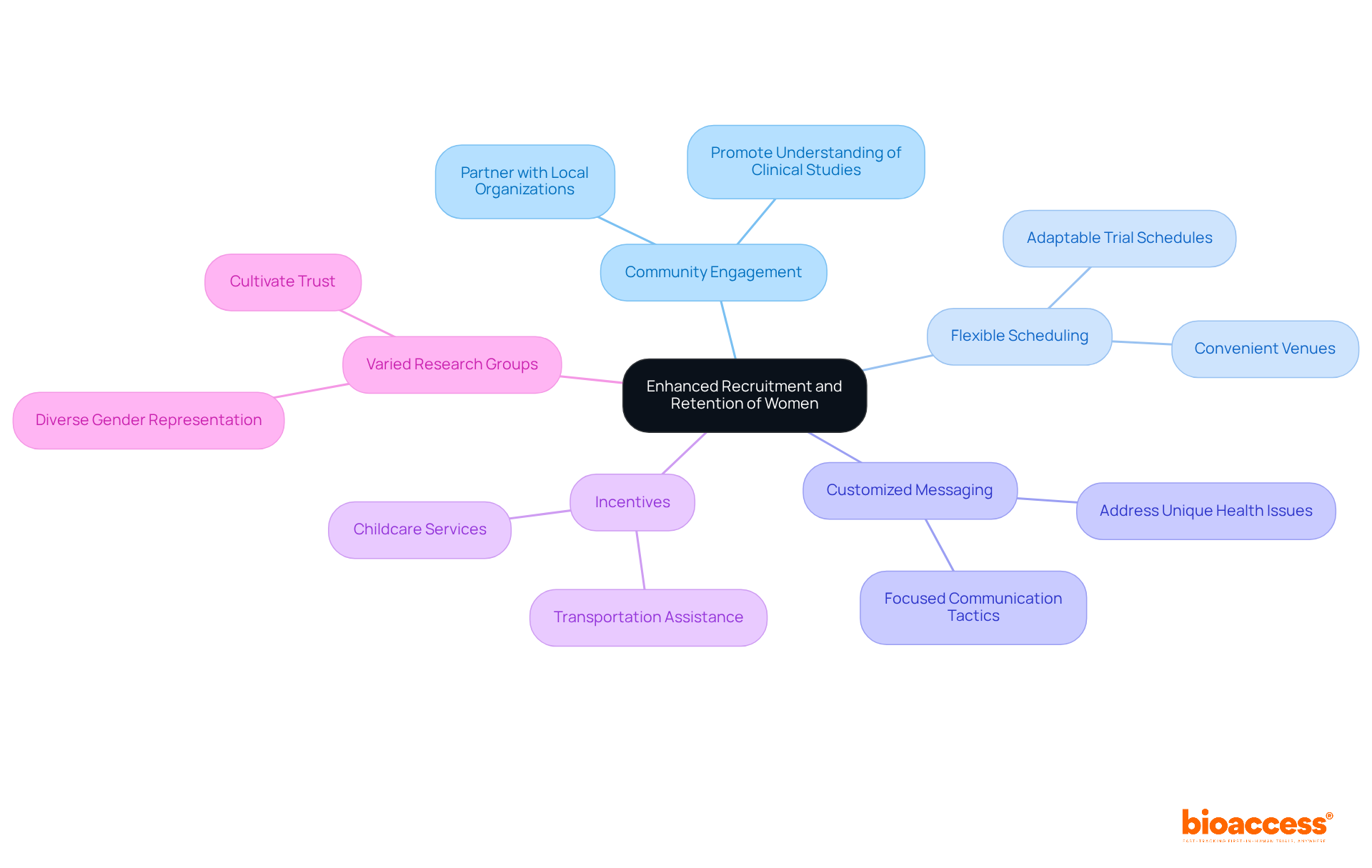


The underrepresentation of women in clinical trials has long posed a significant barrier to equitable healthcare, resulting in a lack of understanding of how treatments affect half the population. This issue is not merely a statistic; it’s a critical gap that undermines the effectiveness of medical advancements. As the healthcare landscape evolves, the inclusion of women in research is not just beneficial; it is imperative for developing safe and effective therapies tailored to their unique needs.
Despite recent policy advancements, challenges such as historical biases, logistical hurdles, and cultural stigmas continue to hinder participation. These obstacles must be addressed head-on. How can researchers overcome these barriers to ensure that women's voices are heard and their health needs are met in clinical research? This question is essential for fostering a more inclusive and effective healthcare system.
The involvement of women in clinical trials is not just important; it is essential for advancing healthcare. Historically, the underrepresentation of women in clinical trials has created a significant gap in our understanding of how various treatments affect this demographic. For instance, prior to 1993, females were often excluded from experiments due to concerns about potential risks during pregnancy and hormonal fluctuations. This exclusion has resulted in a lack of data on how drugs and medical devices perform in females, which can lead to adverse health outcomes. By including women in clinical trials, investigators can gather vital information that reflects the unique physiological and psychological responses of females to therapies, ultimately leading to safer and more effective healthcare solutions tailored to their needs.
Moreover, women in clinical trials represented only 40% of research participants for major illnesses, even though they constitute 51% of the U.S. population as of 2019. This statistic underscores the ongoing inequality in representation. The NIH's 2016 policy mandating the collection of data on biological sex differences, especially concerning women in clinical trials, marks a significant step forward, but we must implement accountability measures to ensure compliance. Additionally, the historical exclusion of women in clinical trials who are capable of childbearing from early-phase clinical trials, as highlighted by the FDA's 1977 guideline, reveals systemic issues that contribute to this underrepresentation.
Effective communication plays a crucial role in encouraging participation among diverse groups. Dr. Yvette Cozier emphasizes the importance of reaching out to Black individuals, noting that they are more likely to engage if the information is presented clearly. By prioritizing the inclusion of women in clinical trials, researchers can gather essential data that accurately represents the distinct physiological and psychological reactions of women to therapies, ultimately resulting in safer and more effective healthcare solutions tailored to their requirements.

Despite advancements, females remain significantly underrepresented in clinical trials, particularly in early-phase studies. This ongoing issue stems from several key challenges:
Historical Bias: Clinical research has a long-standing history of favoring male participants, fostering distrust among females regarding the safety and efficacy of treatments developed primarily for men. This historical exclusion has lasting implications, perpetuating gaps in knowledge about female health needs. Notably, a 2022 Harvard Medical School study revealed that females were still considerably underrepresented in research for major diseases as of 2019.
Logistical Barriers: Women often encounter logistical obstacles that hinder their involvement in studies. Responsibilities such as childcare and work commitments can create significant challenges, making it difficult for them to engage in research activities.
Cultural Factors: Societal views and stigma surrounding female health concerns frequently deter participation in clinical studies. These societal norms can lead to hesitation in engaging with research that addresses issues primarily impacting females.
Shortage of Female Researchers: Research indicates that studies led by female investigators often enroll a greater proportion of female participants. This correlation underscores the necessity for increased female representation in research leadership positions to foster an inclusive atmosphere that encourages participation. The establishment of the FDA's Office of Female Health in 1994 and the NIH Revitalization Act of 1993, which mandated the inclusion of females in NIH-sponsored research studies, are notable milestones in addressing these disparities.
Addressing these obstacles is crucial for enhancing female participation in research studies, ultimately leading to more equitable healthcare outcomes and a deeper understanding of how treatments affect females.

To enhance the recruitment and retention of women in clinical trials, several strategies can be implemented:
By implementing these strategies, researchers can create a more inclusive environment that encourages women in clinical trials.

The inclusion of women in clinical trials is not just a matter of fairness; it is essential for advancing medical knowledge and developing effective treatments. The historical exclusion of women has created significant gaps in our understanding of how therapies impact this demographic, leading to potential health risks and ineffective solutions. Addressing this imbalance is crucial to ensure that healthcare advances reflect the unique needs of women, ultimately resulting in better health outcomes.
Several key points have emerged throughout this discussion:
These challenges not only hinder women's participation but also perpetuate a cycle of inequality in healthcare research. Strategies such as community engagement, flexible scheduling, tailored communication, and the provision of incentives can significantly enhance the recruitment and retention of women in clinical studies. By fostering an inclusive environment, researchers can ensure that clinical trials accurately represent the population they aim to serve.
In conclusion, the importance of women's participation in clinical trials cannot be overstated. It is imperative for stakeholders across the healthcare spectrum to recognize the value of gender diversity in research. By actively working to dismantle barriers and implementing effective recruitment strategies, the medical community can pave the way for a future where women's health is prioritized, leading to safer and more effective healthcare solutions for all.
Why is women's participation in clinical trials important?
Women's participation in clinical trials is essential for advancing healthcare, as it helps gather vital information about how various treatments affect females. Historically, their underrepresentation has created a gap in understanding, leading to potential adverse health outcomes.
What historical factors contributed to the underrepresentation of women in clinical trials?
Before 1993, women were often excluded from clinical trials due to concerns about risks during pregnancy and hormonal fluctuations. This exclusion has resulted in a lack of data on drug and medical device performance in females.
What percentage of research participants for major illnesses were women as of 2019?
As of 2019, women represented only 40% of research participants for major illnesses, despite making up 51% of the U.S. population.
What policy was introduced by the NIH in 2016 regarding women in clinical trials?
The NIH's 2016 policy mandated the collection of data on biological sex differences, particularly concerning women in clinical trials, marking a significant step towards addressing their underrepresentation.
What systemic issues have contributed to the exclusion of women capable of childbearing from early-phase clinical trials?
The FDA's 1977 guideline highlighted systemic issues that contributed to the exclusion of women capable of childbearing from early-phase clinical trials, which has perpetuated their underrepresentation.
How can effective communication impact participation in clinical trials?
Effective communication is crucial for encouraging participation among diverse groups. For example, Dr. Yvette Cozier emphasizes that clear presentation of information can lead to higher engagement from Black individuals in clinical trials.
What is the ultimate goal of including women in clinical trials?
The ultimate goal of including women in clinical trials is to gather essential data that accurately reflects their unique physiological and psychological responses to therapies, leading to safer and more effective healthcare solutions tailored to their needs.